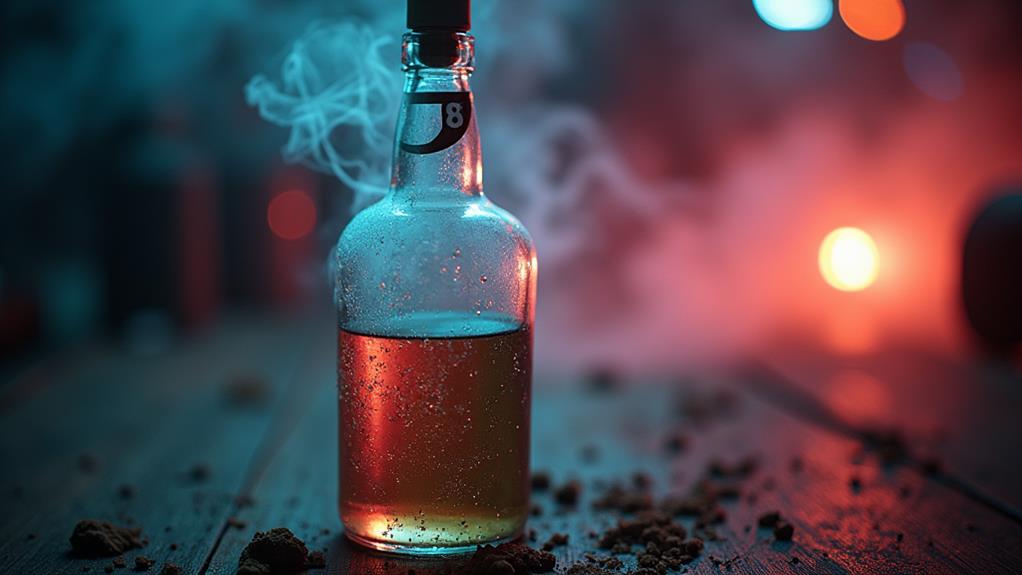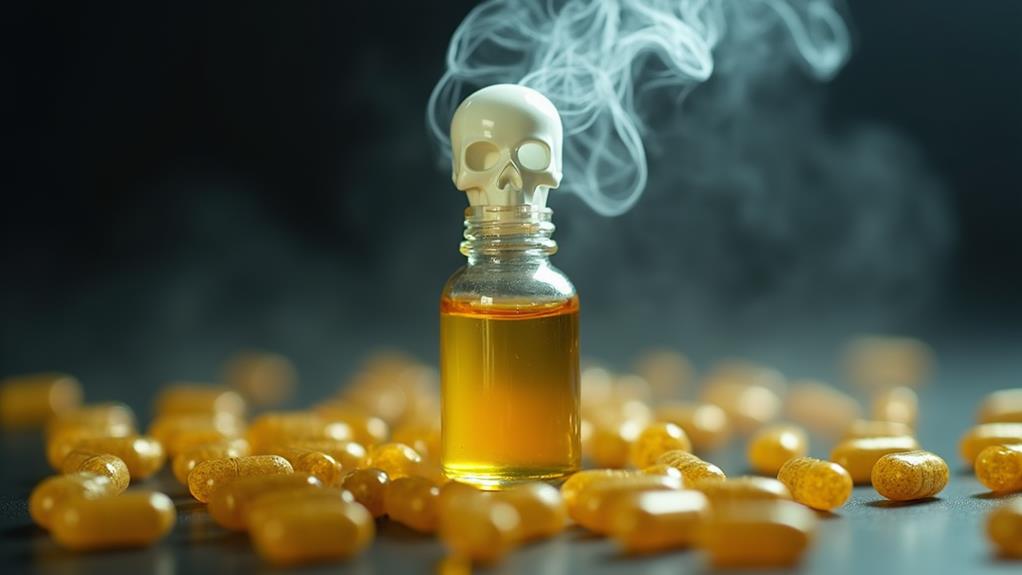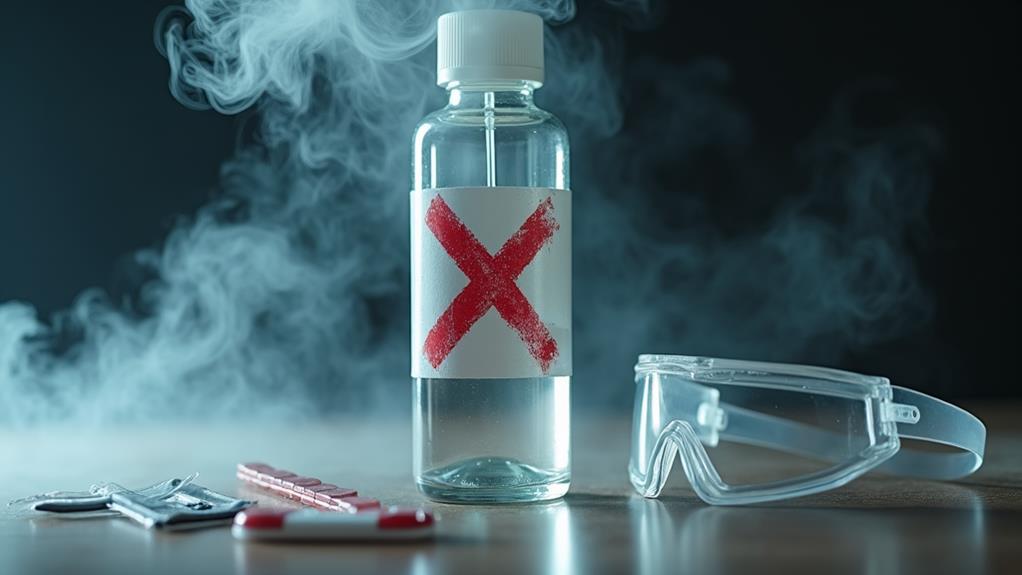Oxygen Deprivation: The Silent Killer Lurking in Your Poppers Bottle
Poppers, or alkyl nitrites, present a hidden danger of oxygen deprivation. These substances interfere with hemoglobin's oxygen-carrying capacity and cause rapid vasodilation, potentially leading to inadequate oxygen delivery to essential organs. Users may experience dizziness, confusion, and visual disturbances as early warning signs. Prolonged use can result in chronic fatigue, cognitive decline, and irreversible brain damage. The brief euphoria comes at a cost of potential long-term health consequences, including cardiovascular issues and weakened immunity. Understanding the science behind poppers' effects and implementing harm reduction strategies are significant steps for those considering or currently using these substances.
Understanding Poppers and Their Effects

Poppers, commonly known as alkyl nitrites, are volatile liquid substances primarily used as recreational drugs. These chemicals are typically inhaled to produce short-lived euphoric effects, improved sexual experiences, and muscle relaxation.
Poppers usage has been prevalent in certain subcultures for decades, particularly among LGBTQ+ communities and nightclub patrons.
When inhaled, poppers rapidly dilate blood vessels, leading to a sudden drop in blood pressure and increased heart rate. This physiological response creates a brief feeling of lightheadedness and warmth. Users often report heightened sensory perception and intensified sexual pleasure.
Nonetheless, the effects are fleeting, usually lasting only a few minutes.
It's essential to understand that although poppers are considered recreational chemicals, they carry significant health risks. Prolonged use can lead to various adverse effects, including respiratory issues, vision problems, and potentially dangerous interactions with other substances.
The Science of Oxygen Deprivation

The science of oxygen deprivation in relation to poppers use is complex and multifaceted. When inhaled, poppers rapidly introduce alkyl nitrites into the bloodstream, interfering with oxygen chemistry and cellular respiration processes.
These compounds bind to hemoglobin more readily than oxygen, reducing the blood's oxygen-carrying capacity. Simultaneously, they cause vasodilation, potentially leading to a sudden drop in blood pressure and decreased oxygen delivery to essential organs, including the brain.
Users have reported various health effects such as eyesight issues and muscle twitching linked to popper use. The resulting hypoxia can manifest in various symptoms, from dizziness to loss of consciousness.
Prolonged or frequent use may lead to cumulative damage, as cells struggle to maintain normal metabolic functions without adequate oxygen. Understanding these mechanisms is significant for users within the community to recognize potential risks and make informed decisions about their usage patterns, promoting safer practices among peers.
Recognizing Warning Signs

Recognizing warning signs of oxygen deprivation during poppers use is vital for harm reduction. Users should be vigilant for symptoms such as dizziness, lightheadedness, confusion, and rapid heartbeat. These warning signs may indicate reduced oxygen levels in the bloodstream.
Moreover, users may experience visual disturbances, including blurred or tunnel vision. Shortness of breath and difficulty breathing are significant indicators of potential oxygen deprivation. Chronic use has likewise been linked to irreversible brain damage, particularly affecting the cerebral cortex and cerebellum.
User experiences often describe a feeling of euphoria followed by sudden disorientation or loss of consciousness. It's important to understand that these sensations may be early signs of oxygen deprivation rather than desired effects.
Prolonged use or excessive inhalation can lead to more severe symptoms, including seizures or cardiac arrhythmias. Recognizing these warning signs swiftly allows users to cease inhalation and seek fresh air, potentially preventing serious health consequences.
Long-Term Health Consequences

In spite of the short-lived effects of poppers, prolonged or frequent use can lead to significant long-term health consequences.
Regular exposure to these volatile nitrites can result in chronic fatigue, leaving users feeling persistently exhausted and unable to engage in daily activities.
Furthermore, cognitive decline has been observed in habitual users, manifesting as memory impairment, difficulty concentrating, and reduced problem-solving abilities.
In addition, eye health can be severely compromised, with users reporting blurred vision and central vision loss.
Prolonged use may likewise cause damage to the immune system, making individuals more susceptible to infections and illnesses.
Likewise, some users experience vision problems, including temporary or permanent damage to the retina.
Cardiovascular issues, such as increased risk of heart attack and stroke, have been associated with long-term popper use.
These health risks underscore the importance of understanding the potential consequences and seeking support within the community to address usage concerns.
Harm Reduction Strategies

Harm reduction strategies play a vital role in mitigating the risks associated with popper use. Although abstinence remains the safest option, individuals who choose to use poppers can implement several measures to minimize potential harm.
Safe usage practices include:
- Using in a well-ventilated area
- Avoiding prolonged inhalation
- Never ingesting the liquid
- Refraining from mixing with other substances
Users should be cautious about the lack of regulation and misleading information on popper labels, as this could lead to exposure to unknown or more dangerous chemicals.
Education on proper emergency response is significant. Users should be aware of the signs of oxygen deprivation and know how to react if someone experiences adverse effects. Establishing a buddy system can guarantee immediate assistance if needed.
Furthermore, users should familiarize themselves with local harm reduction resources and support networks. By nurturing a community-centered approach to harm reduction, individuals can create a safer environment for themselves and others while promoting responsible use and informed decision-making.
Call Us To Assist You
To summarize, the innocuous poppers bottle harbors a sinister threat: oxygen deprivation. This silent assassin lurks beneath the rush, waiting to strike unsuspecting users. As the allure of fleeting euphoria beckons, the specter of hypoxia looms. Prudent harm reduction strategies and heightened awareness of warning signs are crucial. In the end, the pursuit of altered states through inhalants remains a high-stakes gamble, where the house advantage is measured in essential breaths.


